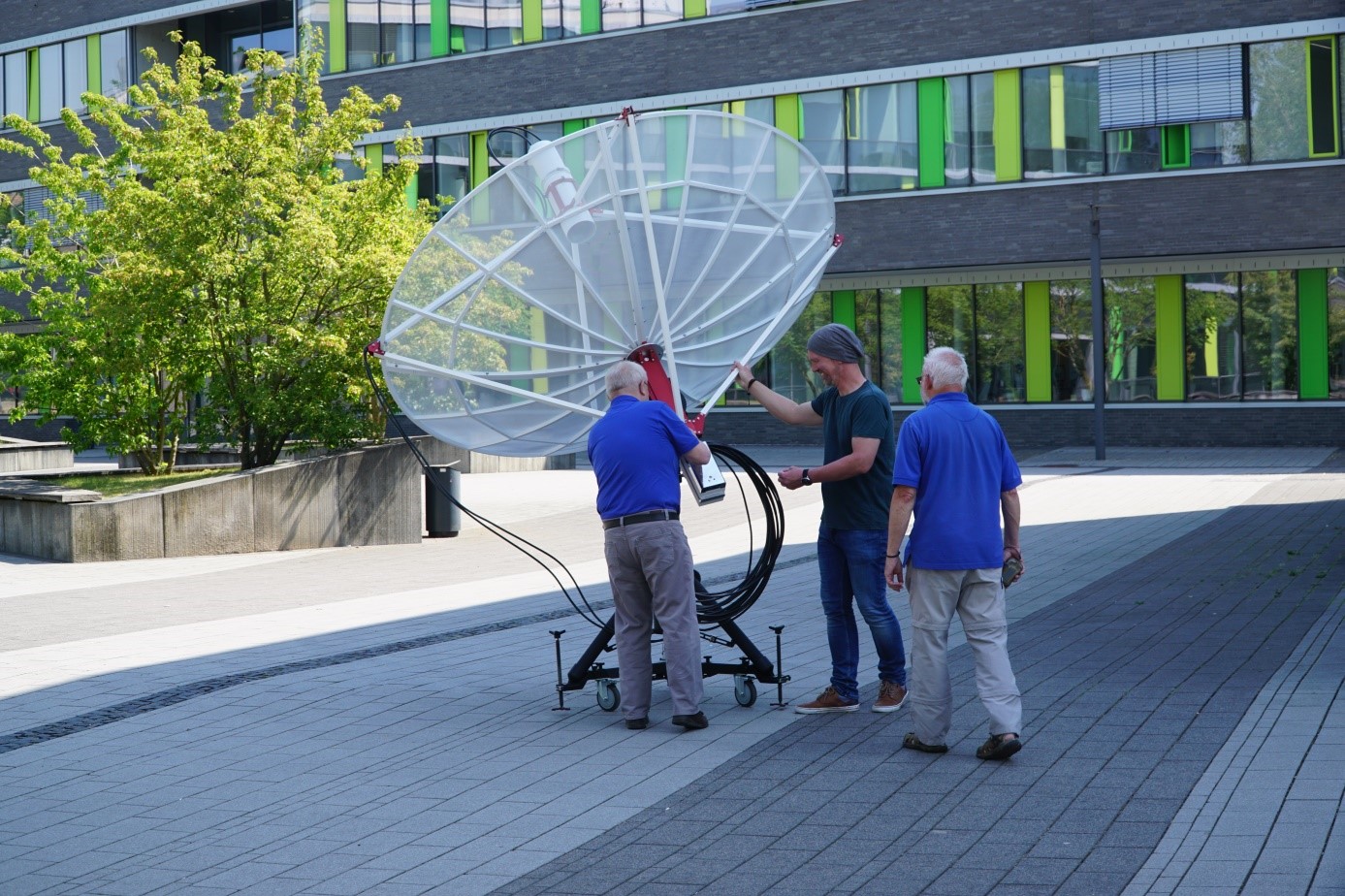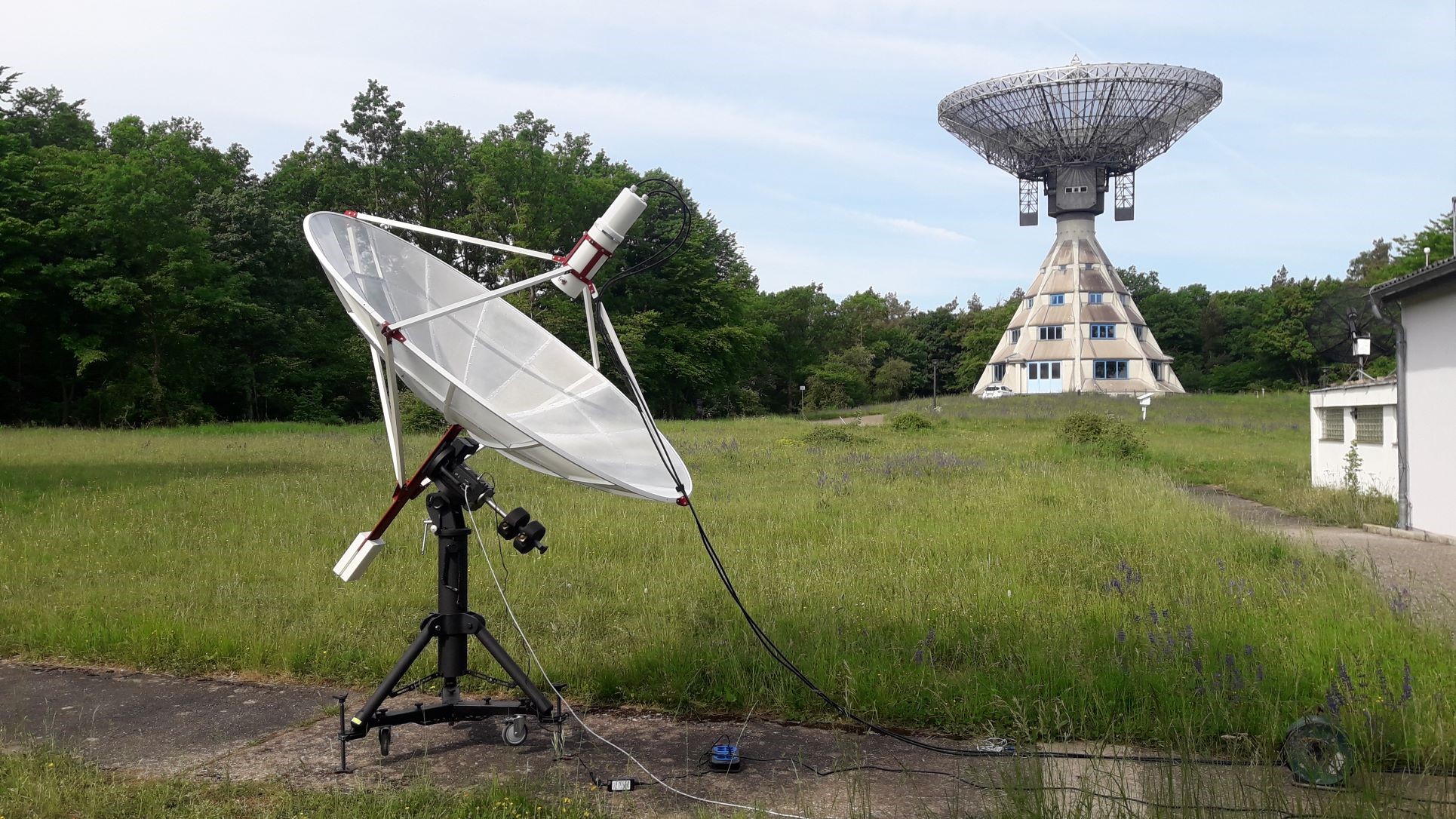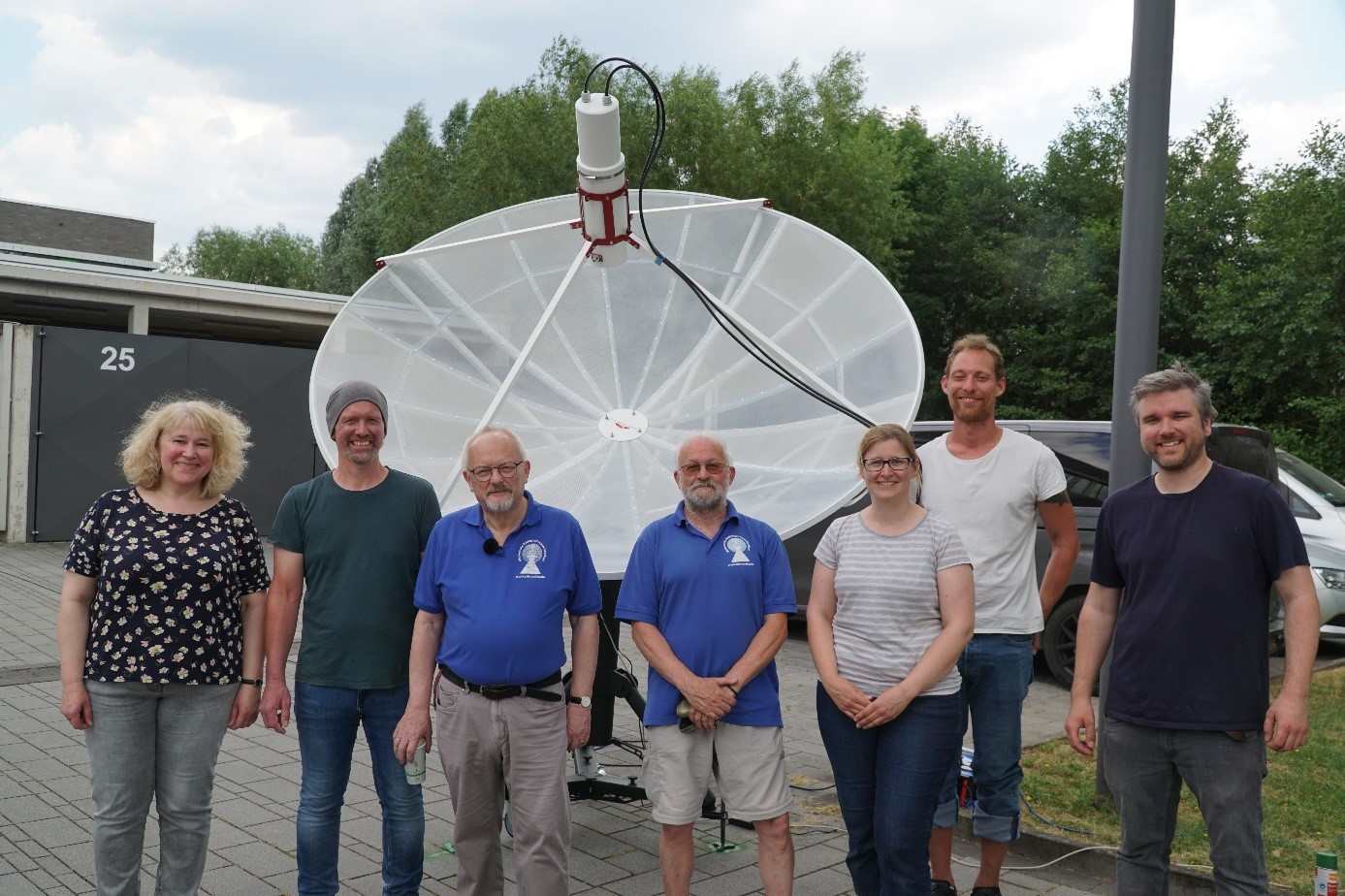Radio telescope of Rhine-Waal University put into operation
Collaboration with renowned institutions and practical applications for students and pupils
The new radio telescope at Rhine-Waal University is not only a valuable resource for the education of students but also offers opportunities for exciting research and collaboration with renowned institutions. With the support of experts from the Astropeiler Stockert Association - especially Dr. Wolfgang Herrmann and Thomas Buchsteiner - as well as PD Dr. habil. Jürgen Kerp from the University of Bonn, the radio telescope was finally put into operation on the Kamp-Lintfort campus on June 12th, and the first test measurements were carried out.
Astronomy, one of the oldest sciences, has made rapid progress in recent years, driven by groundbreaking discoveries and the development of new methods and algorithms. The awarding of three Nobel Prizes in Astronomy in recent years attests to the significance of this discipline. Particularly impressive was the visualization of a black hole in our Milky Way using modern algorithms. In order to delve even deeper into the origins of our universe, impressive telescopes such as ALMA in Chile and the currently under construction SKA in Australia and Southern Africa are being used.

Installation of the radio telescope (2.3m mirror) on the Kamp-Lintfort campus (Photo: Dr Marx-Zimmer)
Now, Rhine-Waal University can also rejoice in having its own radio telescope with a 2.3-meter mirror. The telescope will be used both in education of students and for pupils. This summer semester, a first course for computer scientists entitled "Methods and Tools of Modern Astronomy" will be held under the direction of Dr. Monika Marx-Zimmer and Prof. Dr. Frank Zimmer. It not only teaches basic knowledge about radio telescopes and how they work, but also shows ways to do radio astronomy with simple tools. In experiments significantly developed by Moritz Prüm, research assistant at the Faculty of Communication and Environment, the students learn, for example, to measure neutral hydrogen in our own galaxy with the help of a waveguide on the research terrace or to "tap" data from a weather satellite with the help of a simple antenna and evaluate it with the computer. In addition to basic astronomical knowledge, the course also teaches methodological skills such as measuring and analysing data, applying machine learning algorithms, scientific visualisations and computer simulations.

The radio telescope on the Stockert near Bad Münstereifel where it was tested and its possibilities were explored as part of a Bachelor's thesis. In the background: the Stockert astropeller, 25m mirror (Photo: Dr habil. Jürgen Kerp)
In addition to its use in teaching, the radio telescope is to be made accessible to all students at the university, e.g. in interdisciplinary courses or interdisciplinary projects, in order to set up and develop further experiments. In addition, school students should also have the opportunity to use the telescope - for example, as part of summer schools. Through simple measurements such as the rotation curve of our Milky Way, they could work directly on central questions of physics and astronomy: Is there dark matter? Does the theory of gravity need to be changed? Questions and experiments that already met with great interest at the faculty's open day in June.
The use of the radio telescope also opens up the possibility for further cooperation with the Astropeiler Stockert e.V. association (https://www.astropeiler.de/), the Argelander Institute for Astronomy at the University of Bonn (https://astro.uni-bonn.de/) and the Max Planck Institute for Radio Astronomy in Bonn (https://www.mpifr-bonn.mpg.de/). This collaboration enables an intensive exchange of know-how and promotes scientific networking.
When the telescope is not being used for measurements, it is available in the university's FabLab.
Rhine-Waal University of Applied Sciences would like to thank everyone who contributed to the realisation of this project and looks forward to the new possibilities the radio telescope will offer in research and teaching.

Putting the radio telescope into operation - in the centre Dr Wolfgang Herrmann and Thomas Buchsteiner from the Astropeiler Stockert e.V. association (Photo: Jan Sonntag)
